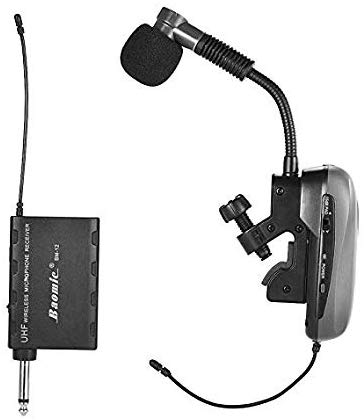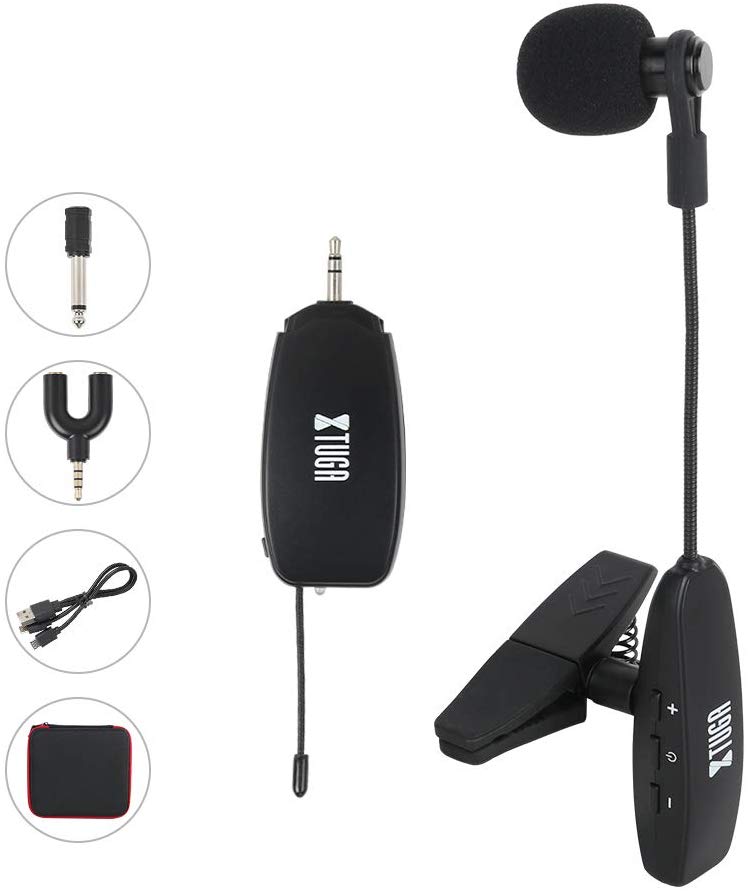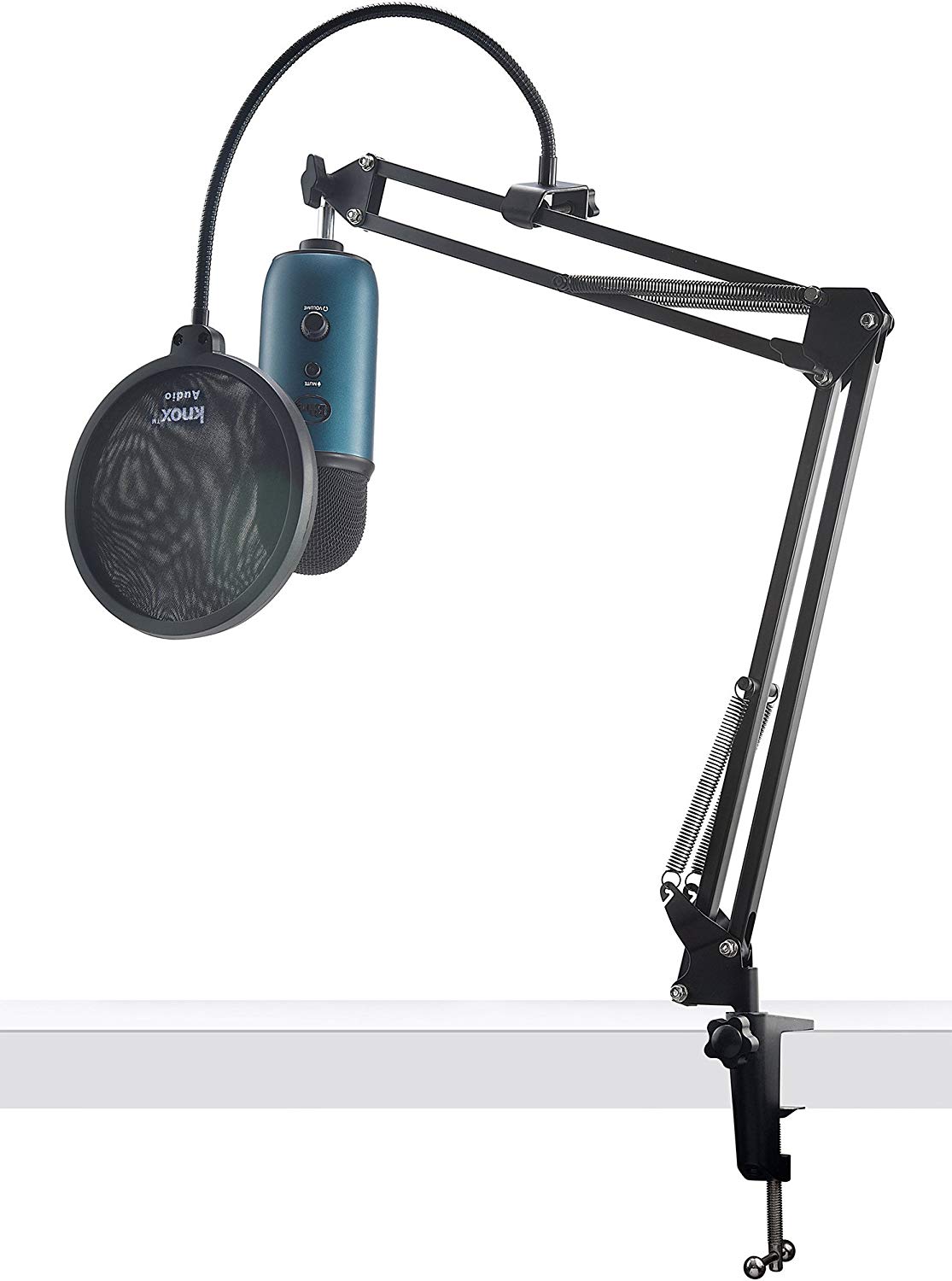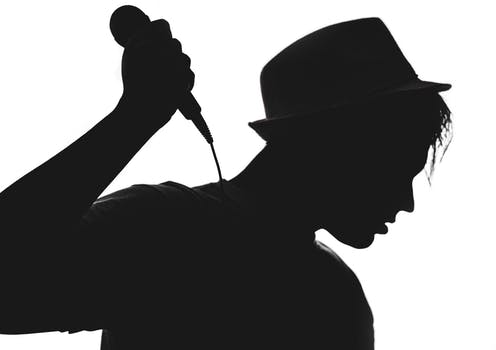This post contains references to products from one or more of our advertisers. We may receive compensation when you click on links to those products.
You are looking for the best microphones for horns but you have no idea how to go about the process.
After all, what you need are quality horn microphones that can guarantee exceptional audio output. Right?
There are several microphones that you can choose from.
However, this can be a major course of headache if you don’t know what to specifically look for.
Therefore, what factors should you consider to avoid making the wrong call?
Quality performance doesn’t have a 100% correlation with how costly the microphone is.
However, certain expensive microphones have an exceptional audio output.
Therefore, what you need is a microphone that is affordable and of quality audio.
Moreover, perfect microphones for horns have a high-frequency response, open sound and captures your intended sound with precision.
For this reason, microphones for horns can be categorized into two, i.e., ribbon and large-diaphragm condenser mics.
I conducted a thorough review of several large diaphragm and ribbon microphones with the aim of finding the best.
After testing and verifying each microphone for output quality, and frequency response range, I settled for these 5 best microphones for horns.
So, keep reading to discover them!
Our Winner After Careful Research



Best Microphones for Horns – Comparison Table
|
Product |
Specs |
Our Rating |
Price |
|---|---|---|---|
   |
Shure PGA98H |
      |
|
   |
Amooper Microphone |
      |
|
   |
Ammoon Baomic |
      |
|
   |
XTUGA Microphone |
      |
5 Best Microphones for Horns
1. Shure PGA98H



Shure PGA98H is an XLR cardioid condenser microphone with a gooseneck.
The microphone operates on a cartridge design that leverages quality horn instrument sound production.
Moreover, the gooseneck is super flexible, hence you can easily adjust it to your liking so that it captures the right horn sound.
Also, at the neck of the gooseneck, you will find a horn clamp for easy mounting.
Besides, the microphone operates on an inline preamplifier where you can connect the XLR cables to for ultimate sound modification.
Also, the preamp is responsible for providing phantom power that runs the microphone.
Furthermore, it operates on cardioid technology that enables it to only pick top quality sound waves while filtering out the unwanted low-quality frequencies.
Also, you have two options with this microphone; you can use the XLR to connect to its preamp or TA4F connector with a wireless body park system.
Pros
- High performance.
- Frequency sampling.
- Portable.
- Easy to use.
- Product warranty.
Cons
- You may need to apply some force to open or close the neck clamp.
2. Amoper Microphone



Amoper microphones are wireless and operate on UHF condenser technology for top-quality sound on trumpets, horns, saxophones, and cellos.
Moreover, the UHF technology enables the microphone to capture excellent audio.
Also, you will experience a stable signal, zero transmission delay, anti-jamming, constant frequency, and clear-smooth sound.
All these are attributed to the UHF technology that microphone runs on.
Additionally, the microphone supports a maximum transmission distance of up to 131 feet.
As you can see, this distance is long enough that an ordinary microphone will not be able to capture the sound waves.
However, this is not a big deal for Amoper microphones.
Therefore, the audio quality will not be affected even when the transmission distance is pretty long.
Its clip is flexible and can rotate in 360 degrees.
This comes in handy as you can position the microphone in whichever direction you prefer.
What’s more amazing is that the clip is shockproof which means you won’t have to worry when unexpected vibrations occur.
To use the microphone, you only need to plug it into a power source and your horns.
You don’t need extra configurations.
This is because the microphone operates on plug and play mode.
Pros
- High performance.
- High-frequency response.
- Easy to use.
- Portable.
- Wireless connection.
Cons
- The battery lasts four hours which might be inadequate for certain occasions.
3. Ammoon Baomic



Ammoon Baomic microphone is a wireless UHF system receiver and transmitter microphone designed for instruments such as horns, trumpets, and saxophones.
Moreover, its clip size is flexible and can fit in most horn instruments.
Also, fixing the microphone is pretty simple and there’s a rubber surface on the clip that prevents scratching on your horn instrument.
The good news is that once you have fixed the microphone its does not easily come out but remains firmly attached to the instrument.
Furthermore, the UHF has an output plug that is 6.3 mm.
And for easy navigation, you have an LCD display on the UHF. Besides, the UHF works on reliable and stable signal transmission.
Therefore, you are guaranteed stellar audio quality.
The UHF receiver operates on a Li-battery.
Since the kit comes with a charger, you can recharge the battery when the power drains.
Also, the microphone has an operating range of 50 meters which is relatively long enough for signal transmission.
Pros
- High performance.
- High-frequency response.
- Wireless connection.
- Portable.
- Easy to use.
Cons
- Relying on a battery to power might be a disappointment on certain occasions.
4. XTUGA Microphone



XTUGA microphone is a UHF wireless microphone that operates on a high-end wireless frequency transmission technology.
Moreover, it operates on low noise interference, stable signals, and quick frequency transmission.
Also, the technology enables the microphone to work on noise reduction whereby it filters out noise and picks the right frequency sound waves.
With this in place, you will not have to worry when you are in a noisy location.
Its gooseneck is flexible and you can easily adjust it to how you want it to be on the horn.
This is also important as you can set the right position where the microphone picks maximum quality sound.
Pros
- High performance.
- High-frequency response.
- Easy to use.
- Portable.
- Product warranty.
- Wireless connection.
Cons
- Battery power failures can lead to disappointments.
5. Knox Microphone



Knox is a clip-on condenser microphone that is designed for musical instruments such as trumpets, horns, saxophones, and cellos.
With this gooseneck microphone, you can improve the sound quality of your music.
The clip has a rubber surface that protects your horn instrument from getting scratches.
Also, the clip and the entire microphone is made of quality material that makes it sturdy and durable.
Besides, the gooseneck is flexible and you can adjust it to pick the right sound waves.
And once you set the microphone, it stays in that position without falling off from the instrument.
Pros
- Guaranteed product warranty.
- High performance.
- High-frequency response.
- Easy to use.
- Portable.
Cons
- Requires phantom power which is not included in the package.
Bottom Line
Shure PGA984 is best for XLR and TA4F wireless connection.
If you are looking for a horn microphone that has two connection options, then you may need to give this Shure microphone the shot.
Amoper microphone is best for stable signal transmissions and zero delays in signal transmission.
Therefore, if you are looking for the best microphone that can guarantee zero delays in transmission, then Amoper would be the right choice.
Related: Here is a comprehensive article on Microphones.
Ammoon microphones have the best usability due to its LCD interface that enables easy use and control of the microphone.
Therefore, if you are looking for the easiest microphone to use, you might just go for this one.
Xtuga microphones are best for noise reduction.
This is because the microphone operates on an ultra-frequency transmission technology that filters background noise.
Therefore, you have the best recommendation for it, if noise reduction is your objective.
Knox microphones are the best long lasting microphones.
The microphone is designed using sturdy materials which makes it strong and resistant to easy wear and tear.
And if you are looking for microphones that can last long, then the Knox microphone should end your search.
There you go with the comprehensive review of the best microphones for horns.
Based on your specific needs, you can now make a sound decision when buying microphones for horns.

